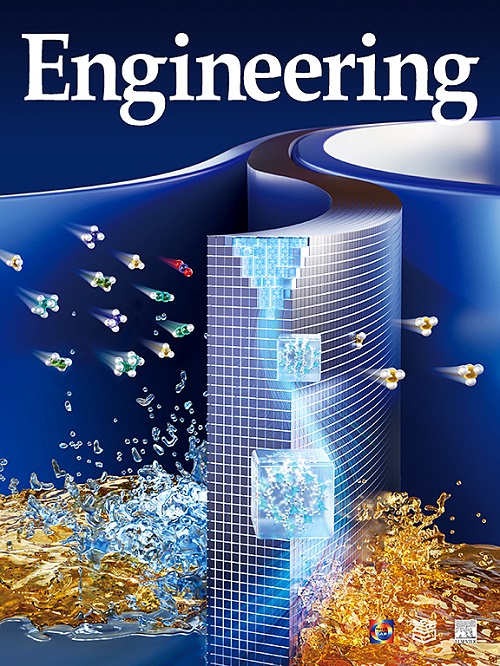嫦娥五号月球样品在外加电场中的电荷特性和粒子动力学
IF 11.6
1区 工程技术
Q1 ENGINEERING, MULTIDISCIPLINARY
引用次数: 0
摘要
面对月球碎屑资源就地利用的挑战,应用外加电场操纵月球颗粒已成为一种前景广阔的空间颗粒控制方法,而这主要取决于颗粒在外加电场中的充电特性。本研究利用嫦娥五号任务(CE5 LS)从月球带回的表层月球碎屑样品,先后研究了其在高真空条件下外电场作用下的充电特性、颗粒动力学特性及其对航天材料的碰撞损伤。结果表明,在高真空条件下,月球碎屑颗粒的充电过程和静电投影与大气条件下不同。实验中使用的 CE5 LS 颗粒直径范围为 27.7-139.0 μm。在电场强度为 3-12 kV-cm-1 时,CE5 LS 获得的电荷为 4.8 × 10-15-4.7 × 10-13 C,电荷质量比为 1.2 × 10-5-6.8 × 10-4 C-kg-1。CE5 LS 在外部电场中更容易带负电。此外,在目标撞击表面观察到了明显的损伤,表明月球碎屑对航空航天材料的影响非常严重。我们的工作有助于更全面地了解控制月球渣岩屏蔽和利用的物理机制,并将激励人们广泛努力开发月球原位工程解决方案。本文章由计算机程序翻译,如有差异,请以英文原文为准。
Charging Properties and Particle Dynamics of Chang’e-5 Lunar Sample in an External Electric Field
Facing the challenges of in-situ utilization of lunar regolith resources, applying an external electric field to manipulate lunar particles has become a promising method for space particle control, which mainly depends on the particle charging properties in the applied electric field. Using the surficial lunar regolith samples brought back from the Moon by the Chang’e-5 mission (CE5 LS), this work successively studied their charging properties, particle dynamics, and their collision damages to aerospace materials under the action of an external electric field in high-vacuum conditions. The results indicated that the charging process and electrostatic projection of lunar regolith particles under high-vacuum conditions were different from those under atmosphere conditions. The particle diameter range of CE5 LS used in the experiment is 27.7–139.0 μm. For electric field strength of 3–12 kV·cm−1, the charge obtained by CE5 LS is 4.8 × 10−15–4.7 × 10−13 C and the charge-to-mass ratio is 1.2 × 10−5–6.8 × 10−4 C·kg−1. The CE5 LS is easier to be negatively charged in an external electric field. Furthermore, significant damages were observed on the target impact surfaces, indicating severe influences of lunar regolith particles on aerospace materials. Our work contributes to a more comprehensive understanding of physical mechanisms controlling the lunar regolith shielding and utilization, and will inspire broad efforts to develop the lunar in-situ engineering solutions.
求助全文
通过发布文献求助,成功后即可免费获取论文全文。
去求助
来源期刊

Engineering
Environmental Science-Environmental Engineering
自引率
1.60%
发文量
335
审稿时长
35 days
期刊介绍:
Engineering, an international open-access journal initiated by the Chinese Academy of Engineering (CAE) in 2015, serves as a distinguished platform for disseminating cutting-edge advancements in engineering R&D, sharing major research outputs, and highlighting key achievements worldwide. The journal's objectives encompass reporting progress in engineering science, fostering discussions on hot topics, addressing areas of interest, challenges, and prospects in engineering development, while considering human and environmental well-being and ethics in engineering. It aims to inspire breakthroughs and innovations with profound economic and social significance, propelling them to advanced international standards and transforming them into a new productive force. Ultimately, this endeavor seeks to bring about positive changes globally, benefit humanity, and shape a new future.
 求助内容:
求助内容: 应助结果提醒方式:
应助结果提醒方式:


